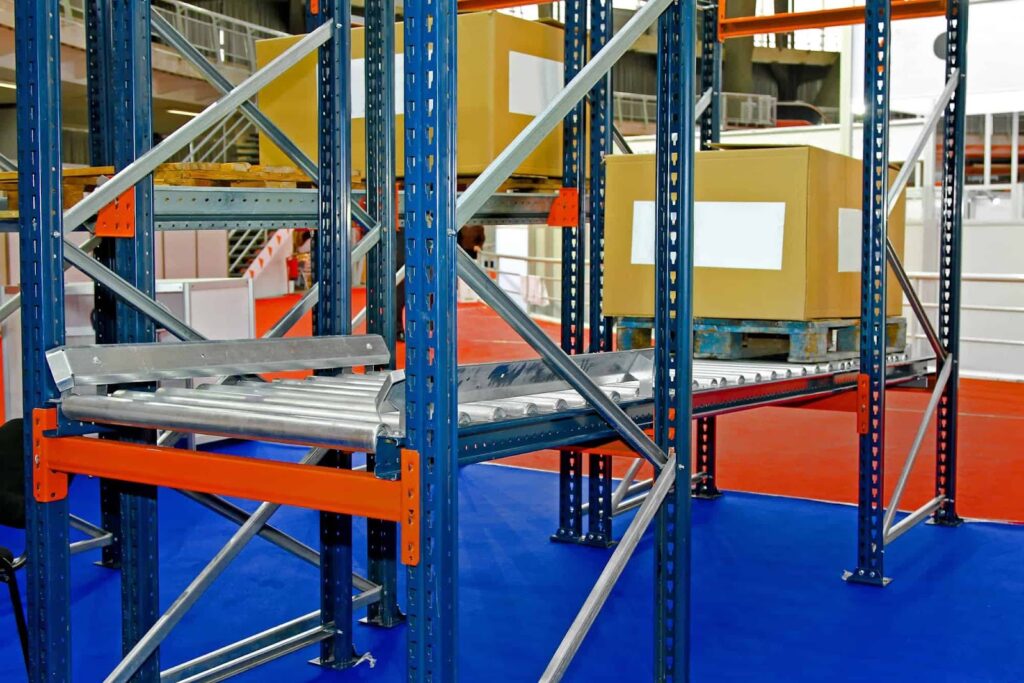Selecting the most appropriate pallet racking system is crucial for optimizing your warehouse storage capacity and efficiency. The ideal racks can accommodate current inventory while allowing future growth, facilitate easy access and movement, protect stock integrity, and match operational needs. This guide explores major pallet rack options and key selection criteria to consider.
Critical Factors When Choosing Racks
Carefully analyzing key warehouse and inventory factors is crucial when selecting the ideal pallet racking system. Consider the following:
- Inventory variety – Number of different products/SKUs needing storage. More variety suits adjustable selective racking.
- Pallet dimensions – Footprint size, height and type of all pallets. Ensures adequate shelf sizing.
- Weight loads – Heaviest pallets and total per shelf/bay weights for capacity needs.
- Pallet quantities – Current and estimated future pallet counts for volume. Calculates density.
- Turnover rate – How often pallets move in/out. Frequent handling suits pallet flow.
- Storage requirements – Any special needs like climate control for goods.
- Access needs – Ease and order of access for workflow. FIFO stock rotation?
- Facility layout – Dimensions and obstacle measurements. Allows ideal rack positioning.
Prioritizing space utilization or accessibility is also key. Discussing limitations and goals with experts like Prince Steel ensures choosing the system fully matching your unique situation.

Selective Pallet Racking
Selective rack is the most common type of racking system. Selective racking provides direct, adjustable access to individual pallets, making it highly versatile. It is designed for First in First out (FIFO) inventory management.
Benefits include:
Pros: Fully customizable, reconfigurable layouts; suits various pallet sizes; easy access speeds workflow.
Cons: Requires ample aisles using floor space; not the most storage dense; limited vertical clearance.
Selective systems work where medium density but flexible storage for an array of inventory is key. Their versatility however reduces bulk storage suitability.

Pallet Flow / Gravity Flow Racking
Gravity flow racks utilize gravity-based carts or rollers moving goods in sequenced order for “first-in, first out” stock rotation. Benefits include:
Pros: High-density storage; facilitates fast turnover of goods; streamlines inventory management.
Cons: Narrower product suitability; high cost for small operations; requires significant maintenance.
Flow racks fit companies shifting high volumes of consistent inventory with tight expiration or rotation needs. The specialization however limits across-the-board use.

Drive-In Racking
Drive-in racks intensely compact uniform pallets into compressed storage bays accessed by forklift channels. Key attributes include:
Pros: Extremely dense pallet volume storage; saves enormous warehouse floor space.
Cons: Only works for same-SKU pallets; forklift maneuvering causes rack damage; last-in access problematic for “first-out” needs.
Drive-in racks multiply stock capacity but exclusively suit storages with little variety needing maximized cube efficiency over access.

Cantilever Racking
Cantilever racks uniquely store long, heavy or irregular items like lumber, piping and machinery. Major benefits involve:
Pros: Supports massive weight capacities; handles extending goods; allows unobstructed access.
Cons: Much more expensive; oversized footprint limits density optimizations.
The specialized support of cantilever systems suits warehouses with non-palletized or custom storage needs yet normal operations may not require abilities.
Achieve Your Ideal Storage Solution with Prince Steel
With extensive knowledge of all major rack types and customization capabilities, Prince Steel can assess your inventory mix, volumes and workflow to recommend and install the perfect racking systems matching your precise specifications and optimization goals.
Contact us today at 480-405-0940 for your free evaluation!